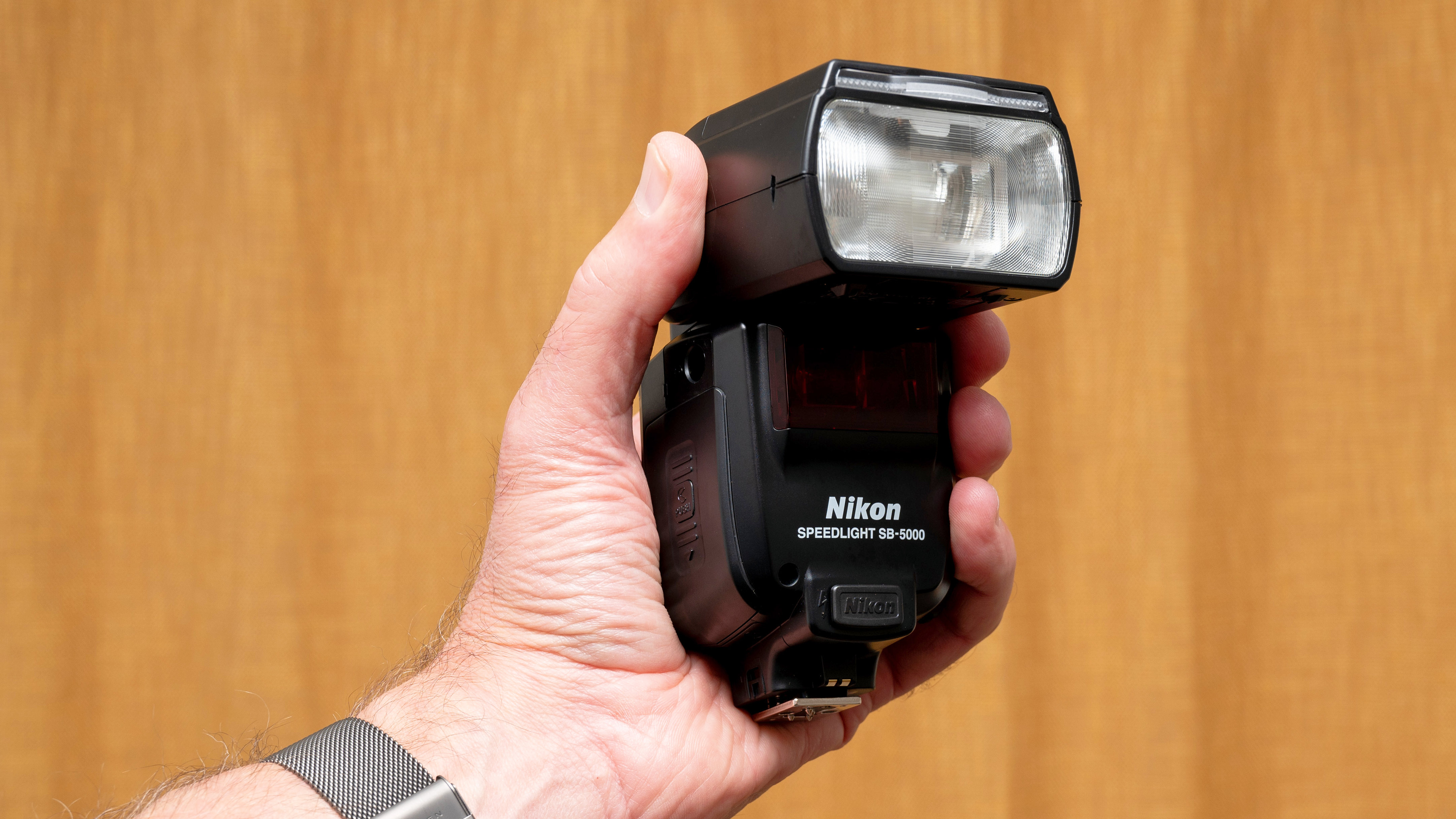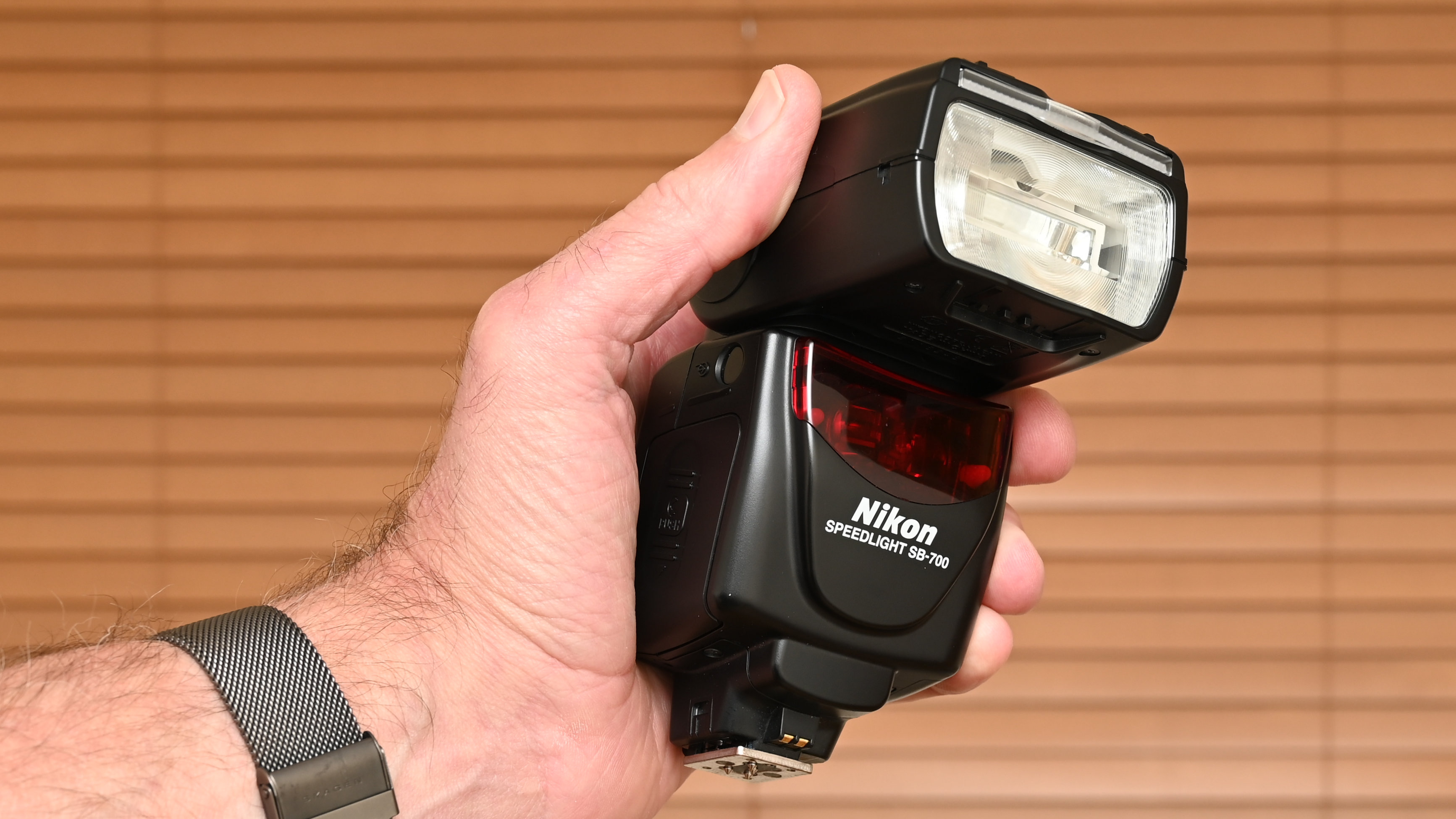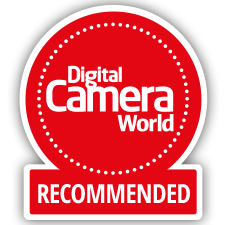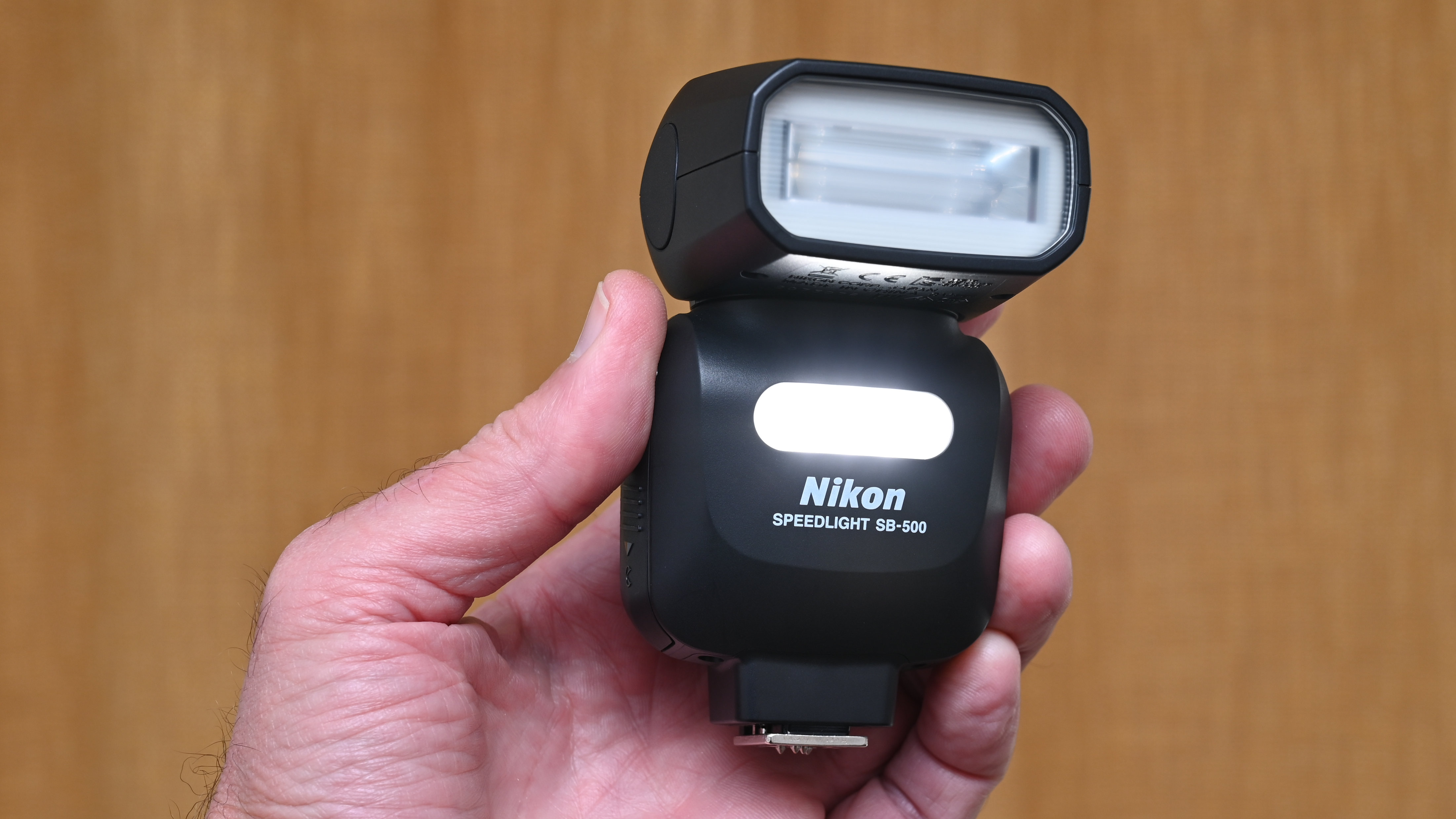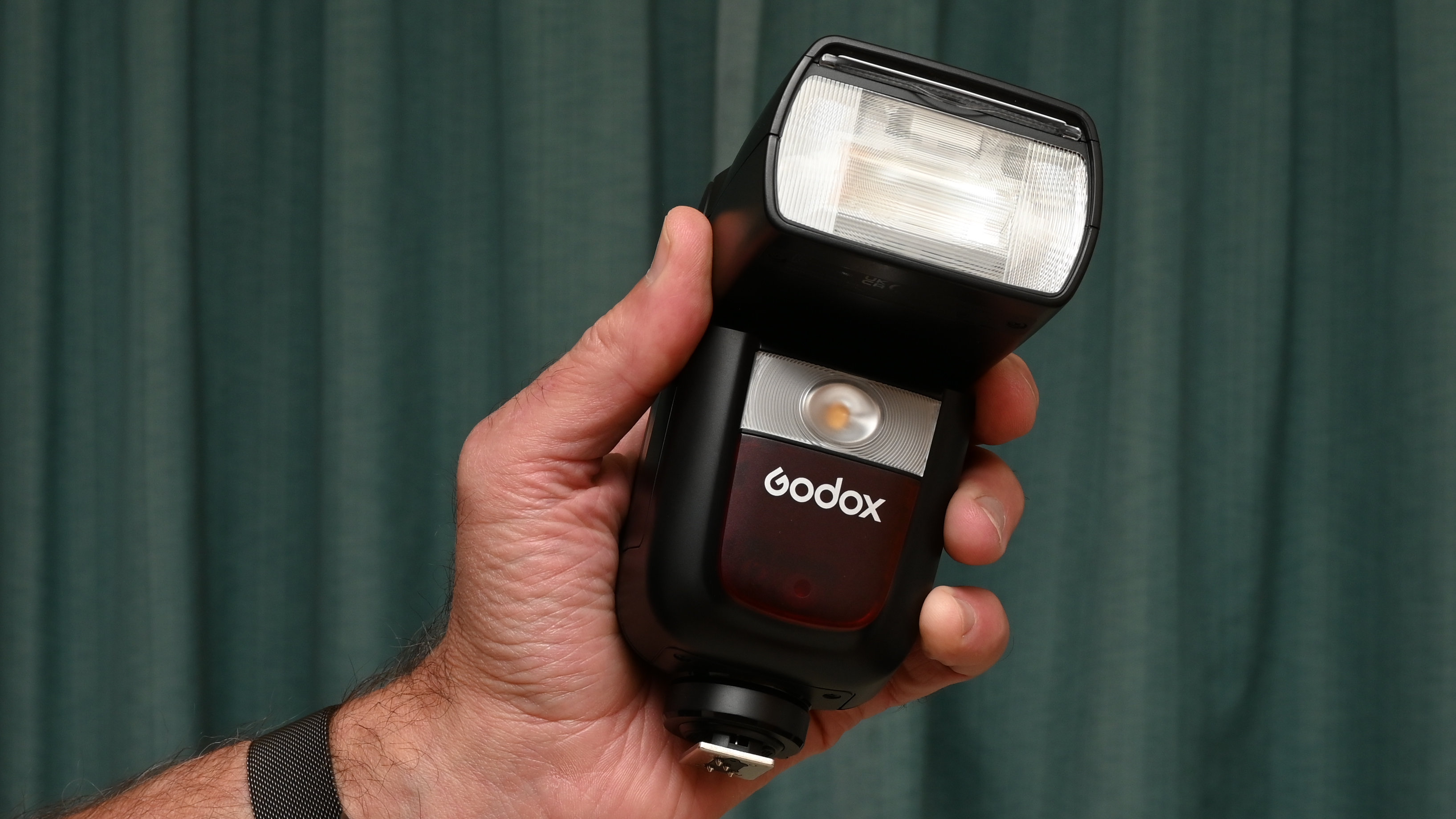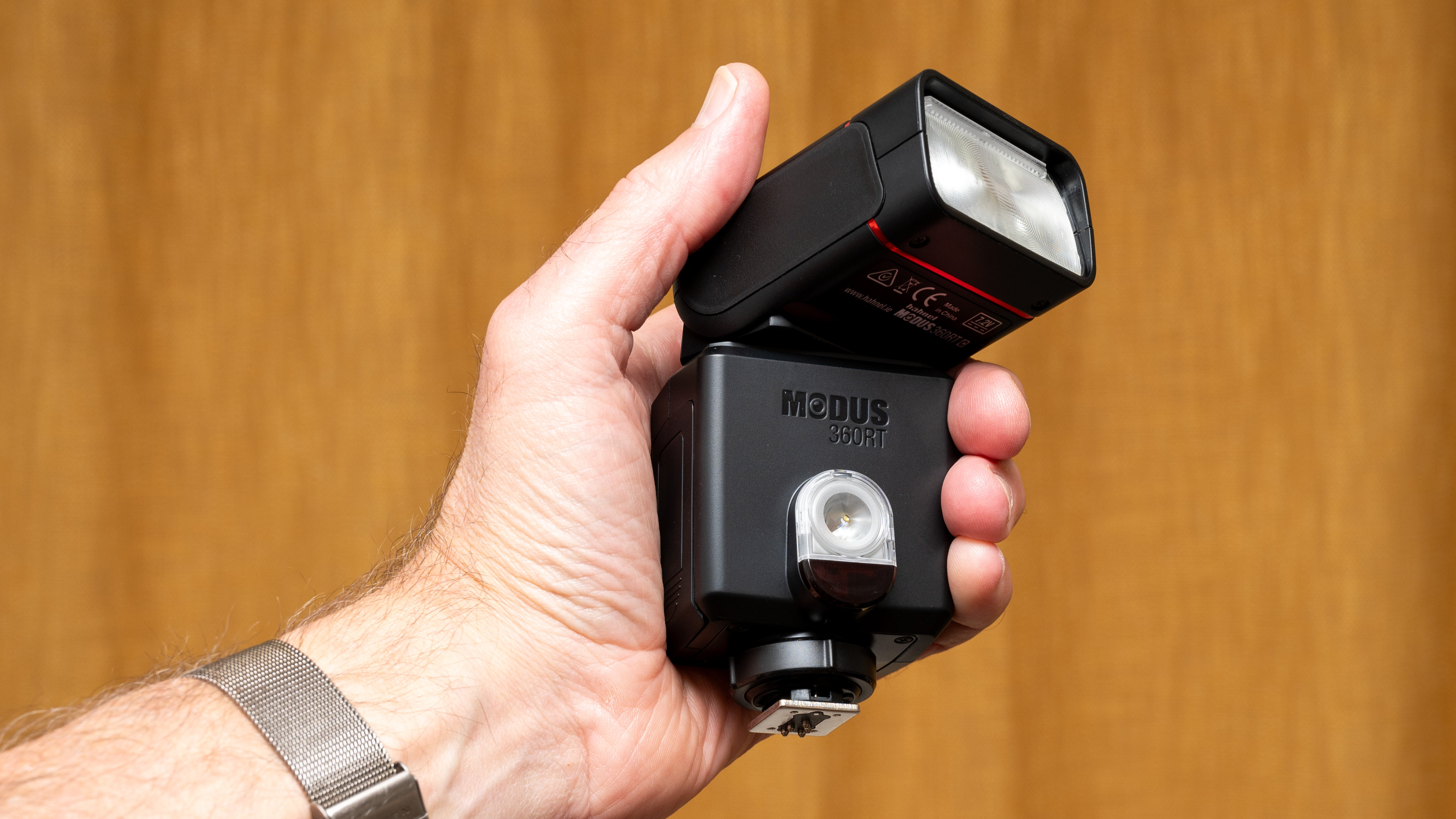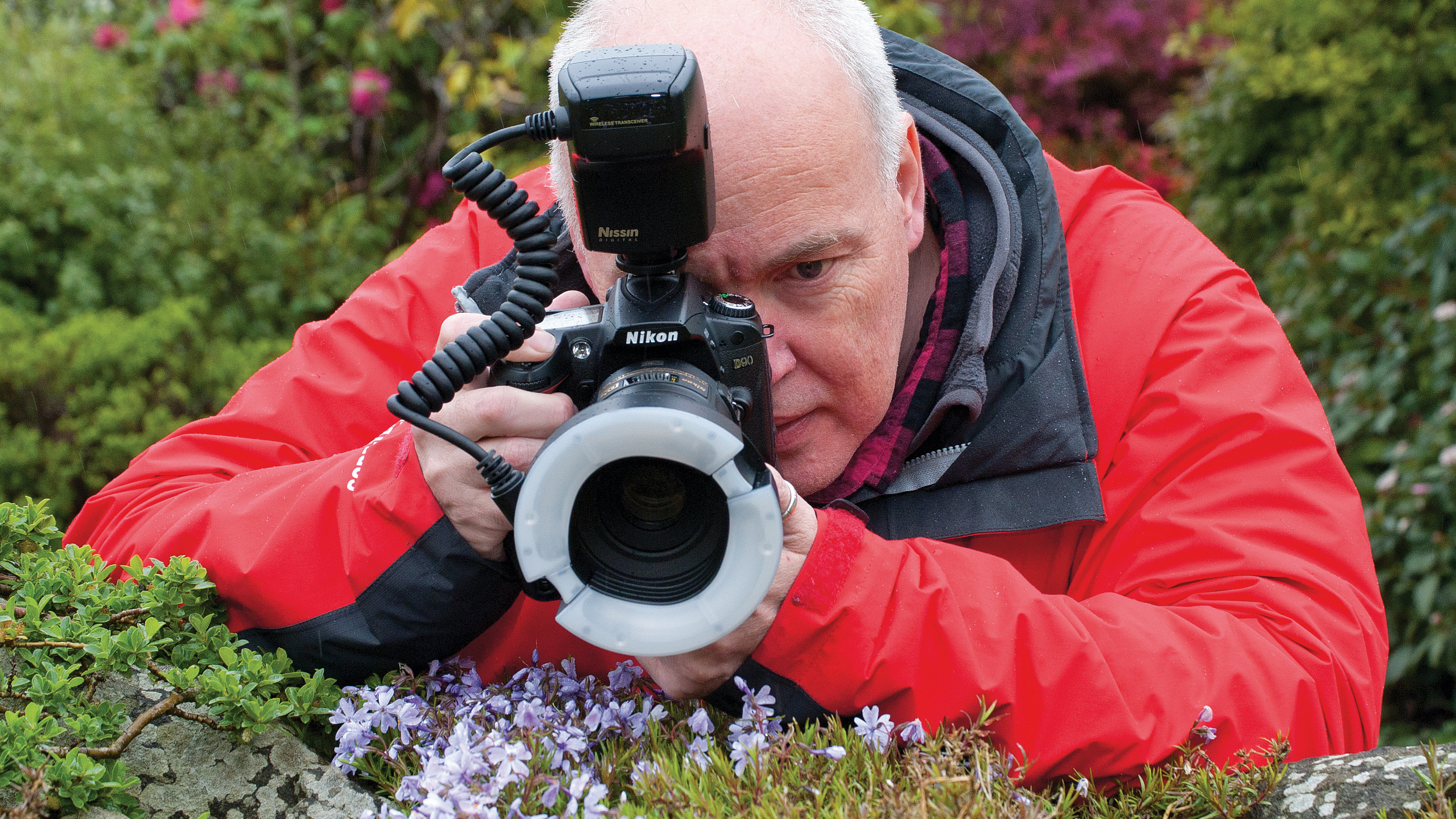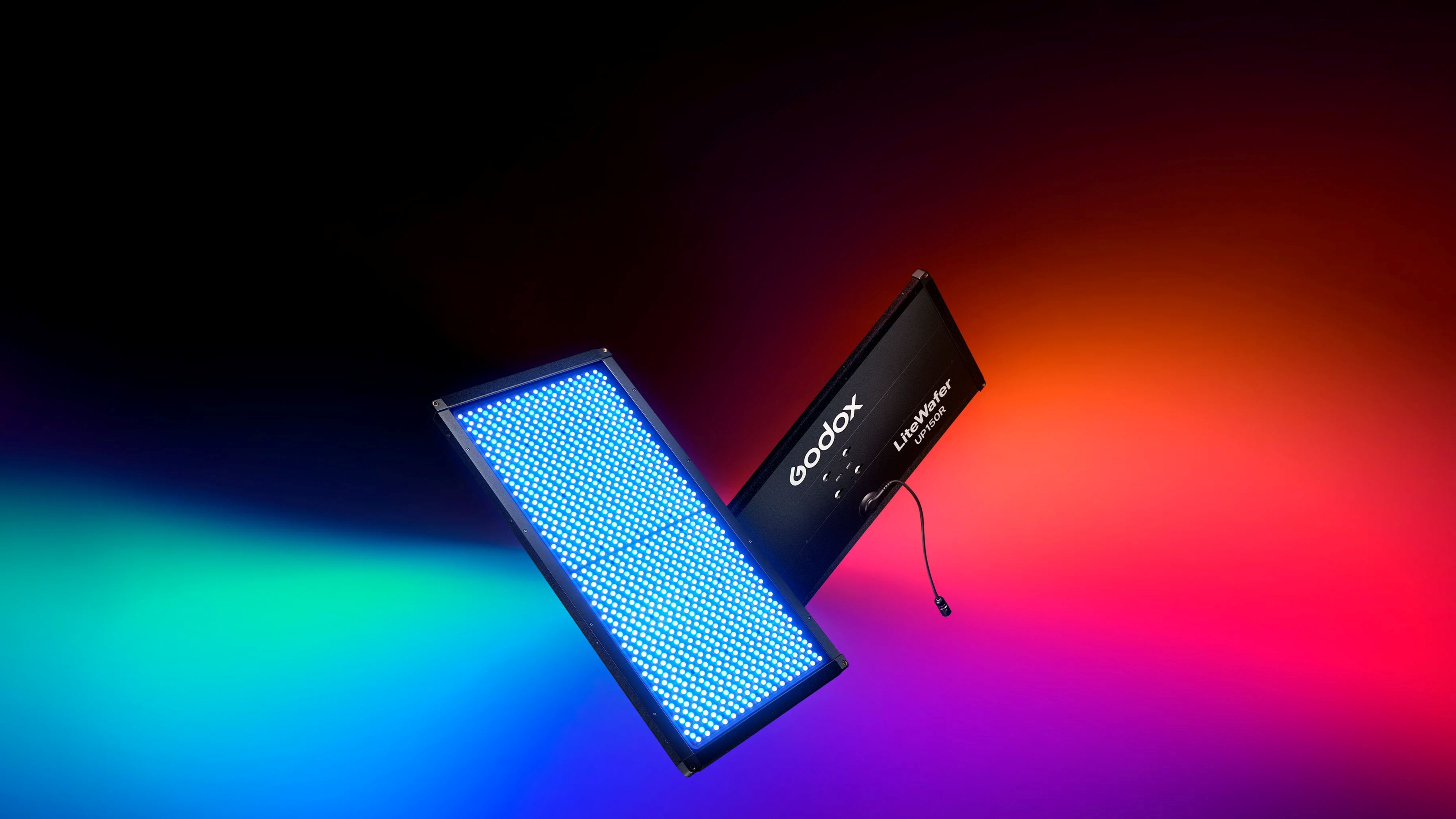Best Nikon flashguns in 2025: Nikon-fit Speedlights you can buy today
A flashgun can be used for everything from filling in shadows on a bright day to lighting subjects in the dark, and here are the best Nikon-compatible options
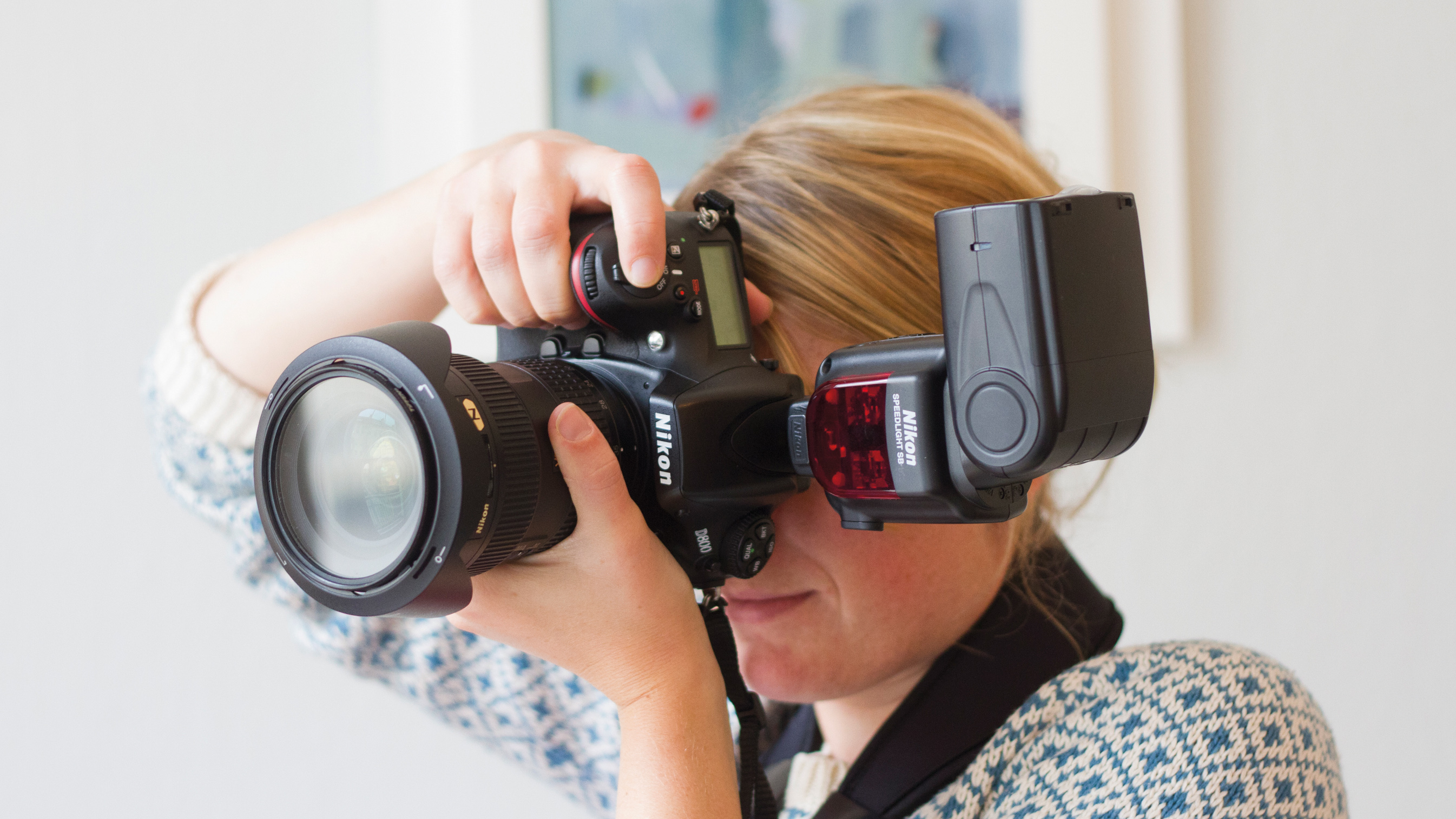
Nikon’s range of flashguns, known as Speedlights, may not be extensive, but it caters to a wide variety of photographers. Whether you’re looking for a professional-grade Speedlight, a versatile mid-range option, or a compact budget-friendly model, there’s a flash to suit your needs. The key is choosing the one that matches your shooting style.
Exploring flashguns can feel daunting with all the technical terms, but I’ve simplified the process by testing Nikon’s latest Speedlights and offering recommendations tailored to different photography requirements.
And you needn't stick to Nikon's own-brand ’guns: to my mind, some of the best options are made by third-party manufacturers such as Hähnel and Godox, and I've included my top choices in this guide, too. You'll find further options in our detailed flashgun buying guide. But for now, let's shed some light on the best Speedlights for Nikon users.
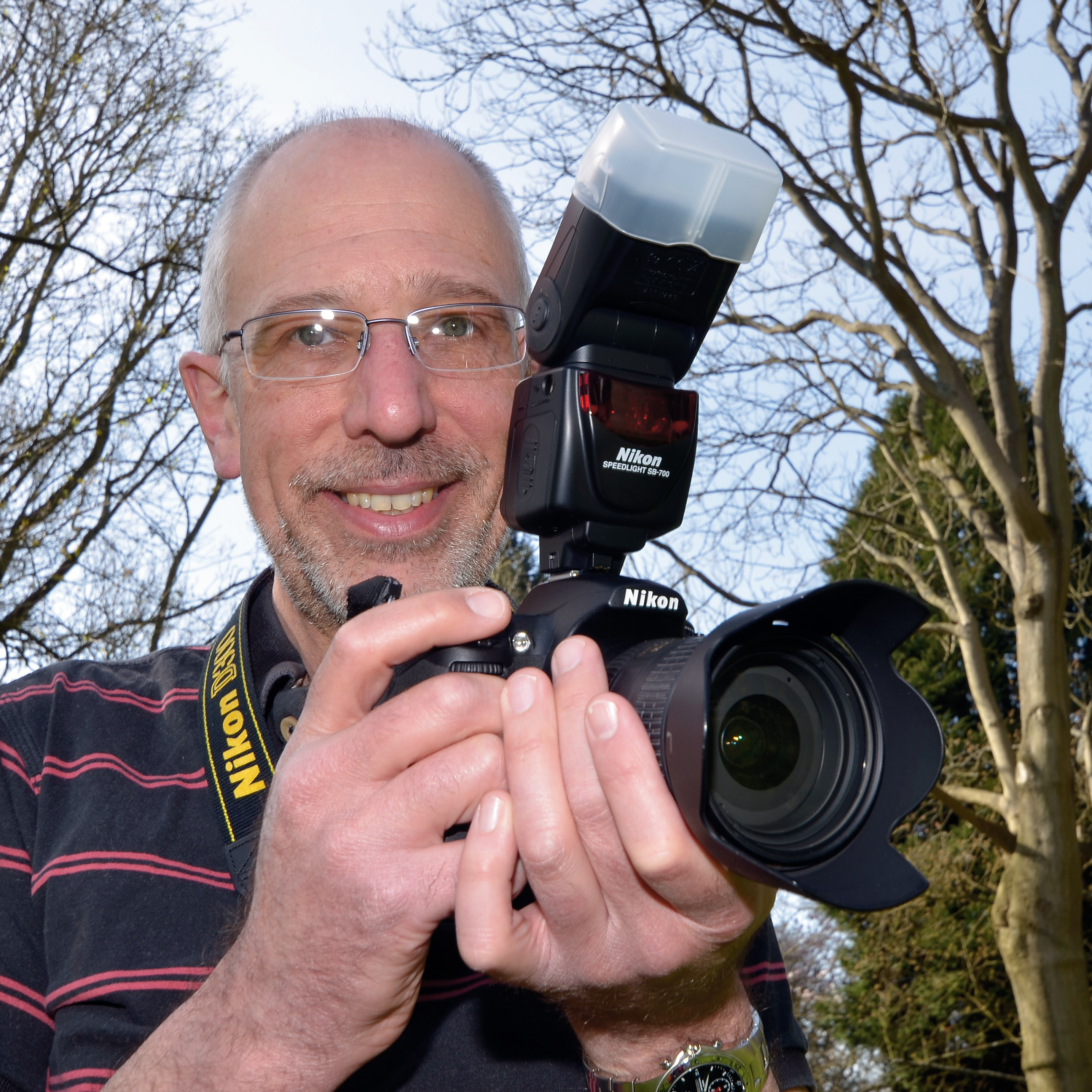
Matthew Richards is a photographer and journalist who has spent years using and reviewing all manner of photo gear. As well as being DCW's primary lens tester, he is also a font of knowledge when it comes to photographic accessories of all kinds. A longtime Nikon shooter, he turns his expert eye to the Nikon Speedlights range.
The quick list
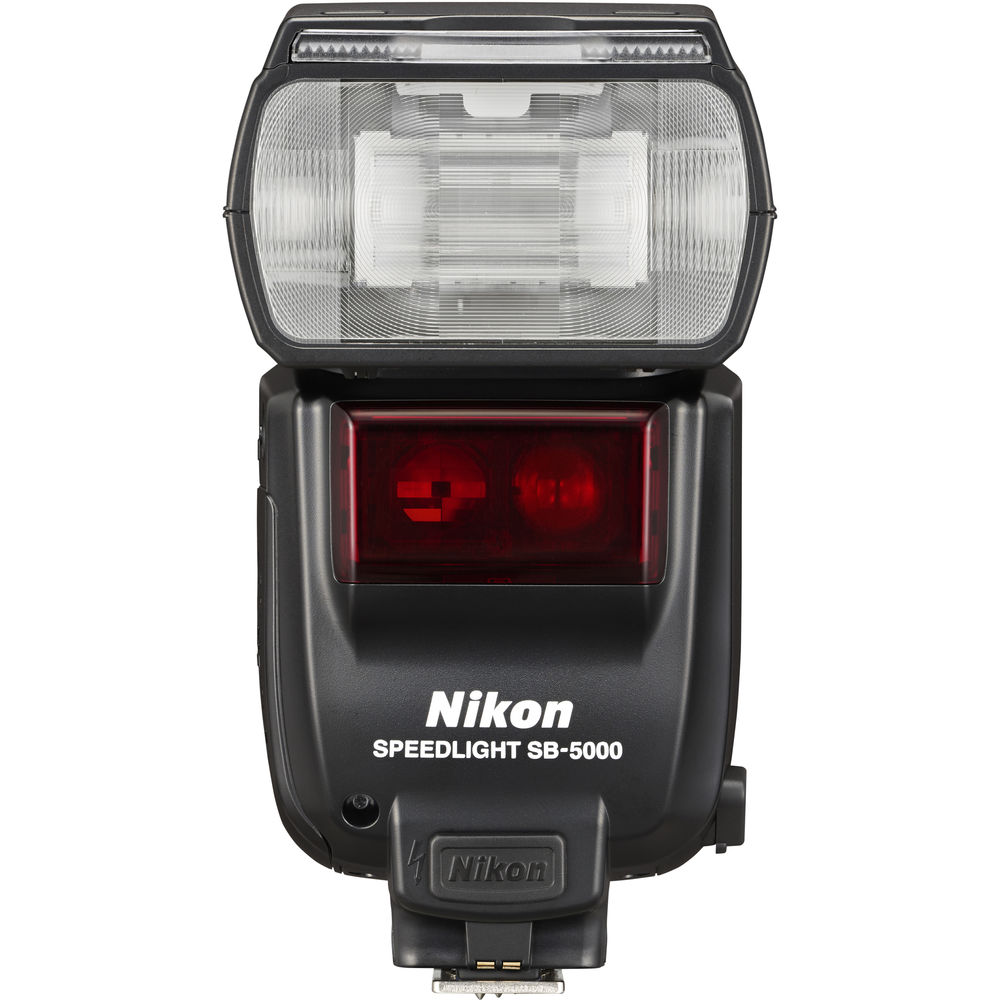
While it's at the upper end of the price scale, Nikon's Speedlight SB-5000 impresses with fast recycling speeds, a good degree of power and a flexible zoom range.
Read more below
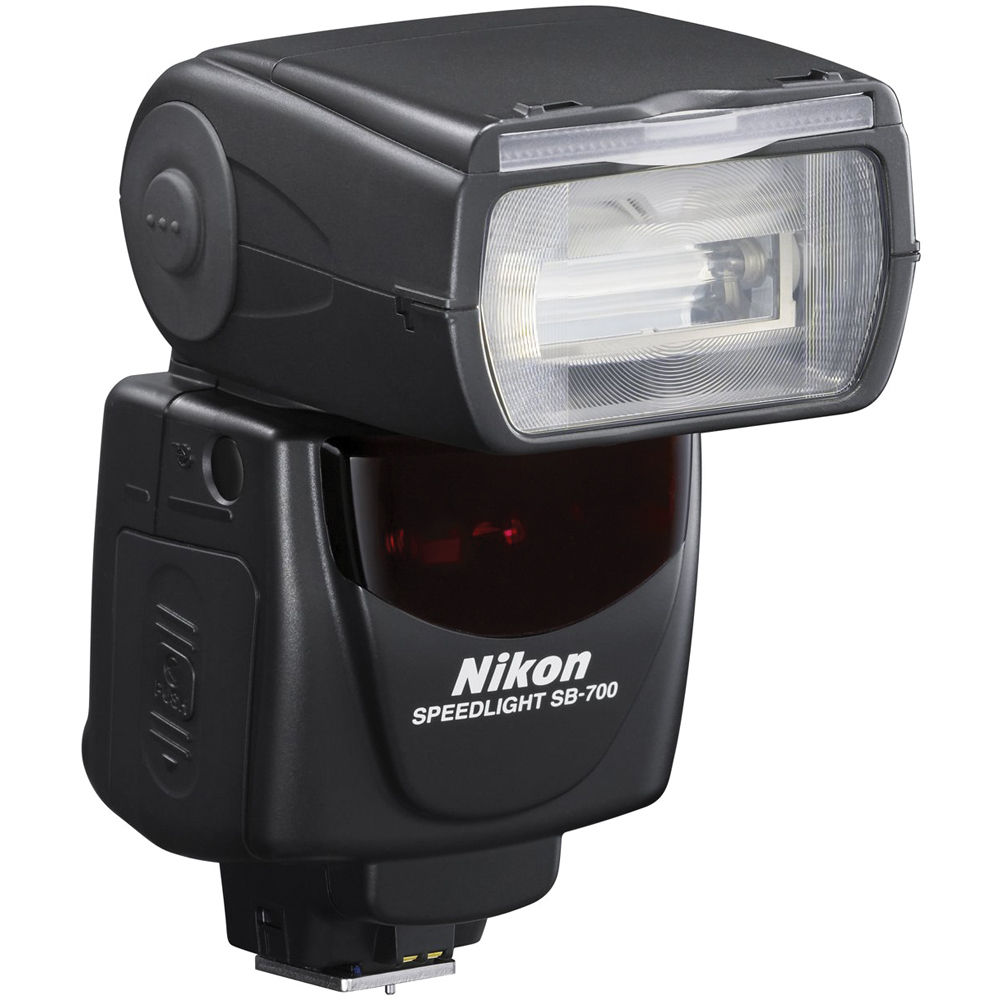
Elegantly designed and simple to use, the Nikon Speedlight SB-700 is a well-priced flashgun that offers a broad zoom range – though its power and recycling speed are unexceptional.
Read more below
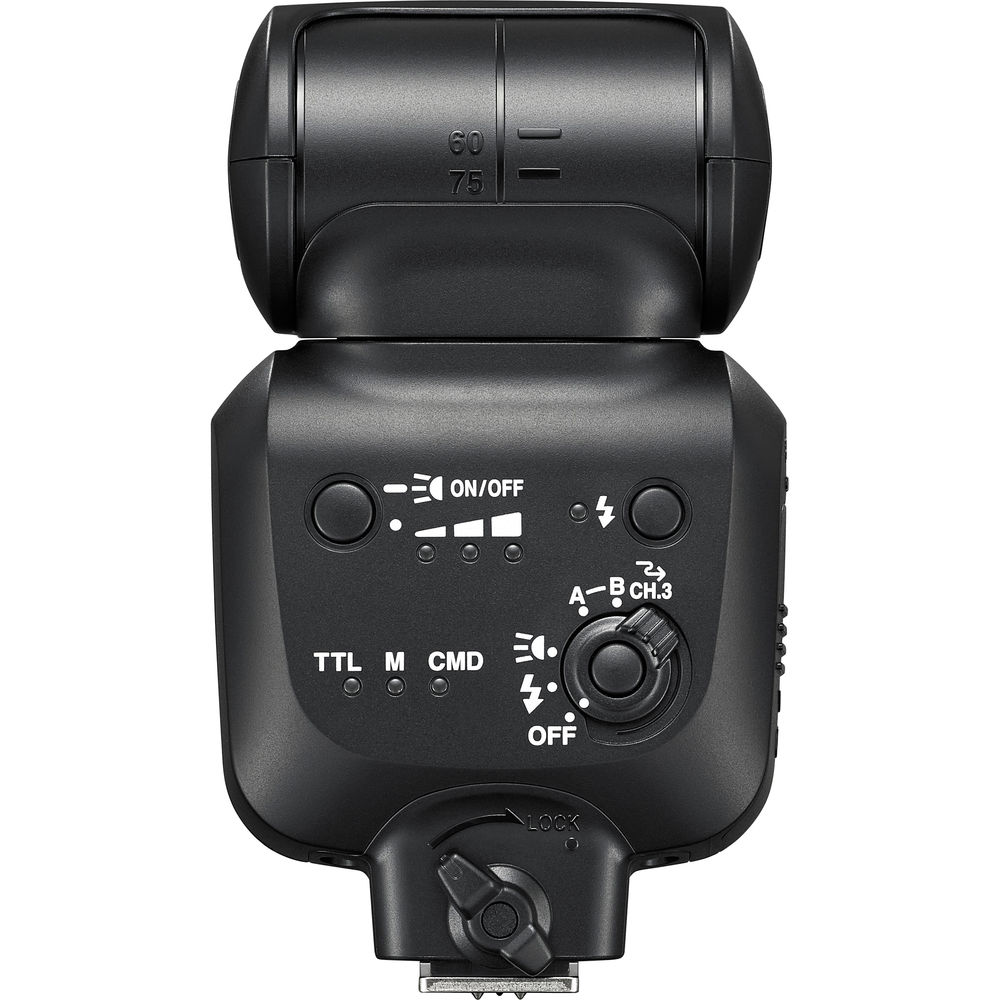
It ain't fancy, but the small and cheap Nikon Speedlight SB-500 is a portable flash you can take everywhere with you. There's also a handy LED lamp for constant lighting.
Read more below

Powerful and versatile with all the mod cons you could wish for, but also affordable, the Godox V860III ticks all the boxes.
Read more below
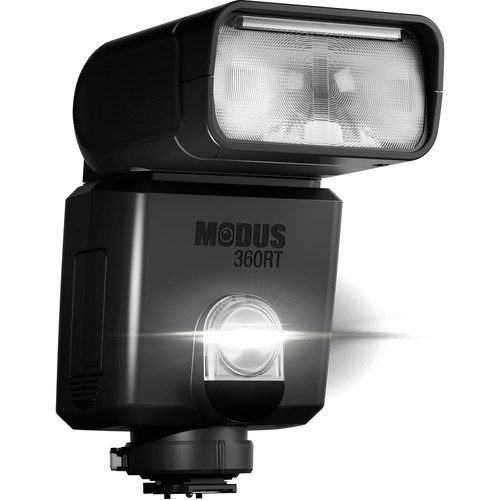
If you want a rechargeable battery in a compact form, look no further than the Hahnel Modus 360RT, although power output is slightly reduced.
Read more below
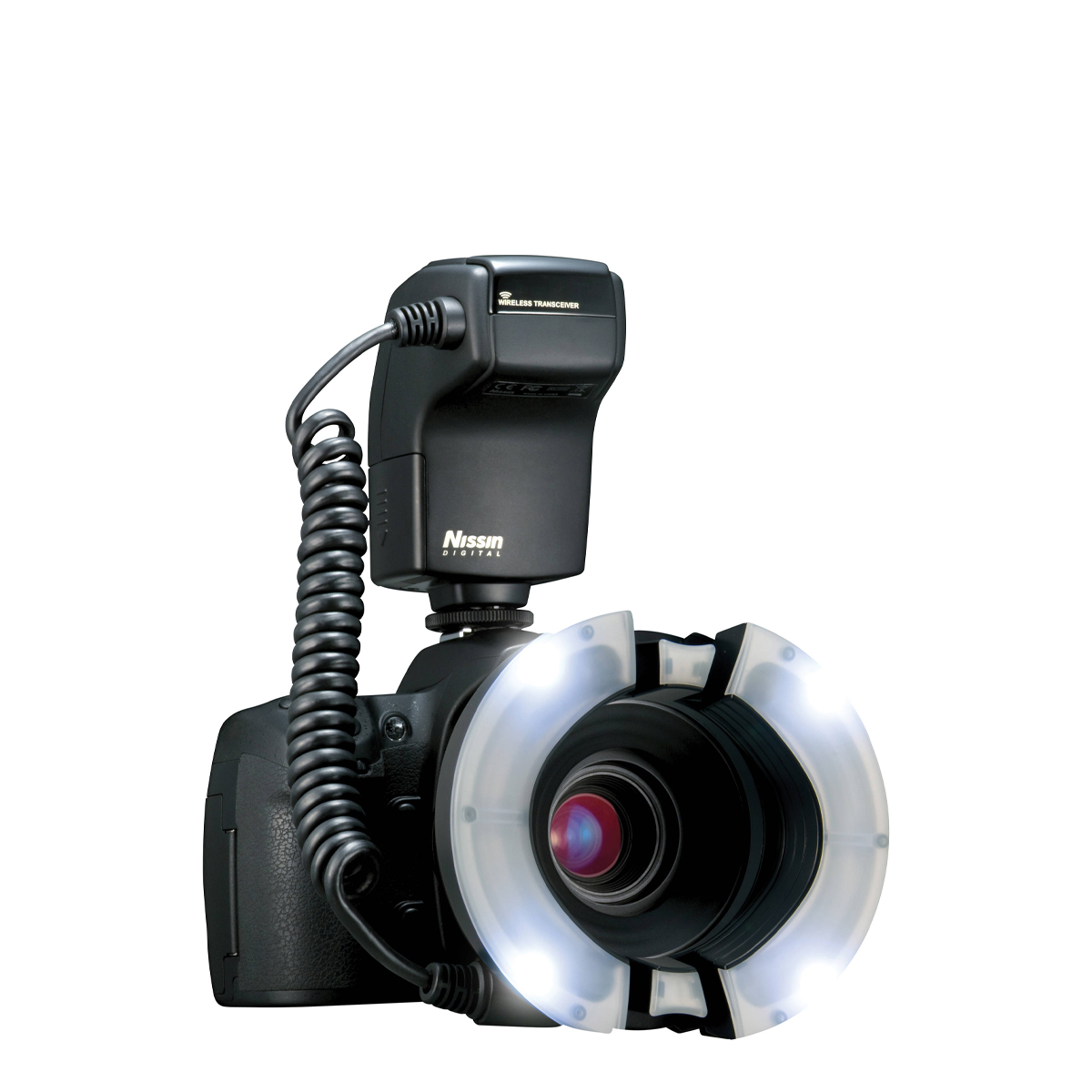
If macro's your bag, this has dual tubes that adjust to surround different-diameter lenses snugly and delivers pleasingly diffuse light with rapid recycle times.
Read more below…
Best Nikon flashguns
Why you can trust Digital Camera World
Best Nikon Speedlight overall
Specifications
Reasons to buy
Reasons to avoid
✅ Flexibility: With its motorized 24-200mm zoom range, the SB-5000 offers great versatility for wide-angle and telephoto shots, along with a flip-down diffuser and catchlight card for added control over light spread.
✅ RF wireless receiver: Built-in RF compatibility allows for remote triggering using Nikon’s RF transmitters and transceivers, simplifying off-camera setups and eliminating the need for line-of-sight.
❌ No built-in battery: The SB-5000 doesn’t come with a rechargeable Li-ion battery pack, so it requires frequent battery replacements.
❌ Limited RF wireless options: The SB-5000 lacks full RF commander capabilities, so using it in multi-flash setups requires additional accessories for full wireless control.
I’ve always been a fan of Nikon’s top-end, pro-grade Speedlights, and the SB-5000 is the best yet. It replaces the SB-910 as the Nikon’s flagship Speedlight. Compared with the SB-700, it adds a more powerful Gn 55 rating (at 200mm, which changes to Gn 34 at 35mm), as well as a longer 24-200mm motorized zoom range. That gives more wide-angle potential as well as greater telephoto coverage. As you’d expect, there’s also a pull-out, flip-down wide-angle diffuser panel and a white catchlight card.
An addition that I like over the SB-700 is the programmable strobe/repeat mode for setting up multiple flashes during a long exposure. Another bonus is the on-board selection of i-TTL and i-TTL BL (Balanced Light) flash metering modes. And although the SB-5000 runs on a conventional set of AA batteries rather than a Li-ion battery, there’s the option of using an external power pack (sold separately). For quick-fire use over extended periods, I like the new integral cooling system that keeps the SB-5000 going for 100 or more shots, even at full output power.
Another neat trick is that the SB-5000 features a built-in RF wireless receiver, which enables remote triggering from Nikon’s optional RF transmitters and transceivers, sold separately. To my mind, however, a built-in transceiver would have been preferable, enabling the SB-5000 to work in RF commander mode rather than just as a remote. Continuous shooting stamina aside, the main performance boost over the SB-700 is in maximum output power. Recycling speeds are quick for such a powerful Speedlight that runs on regular AA batteries rather than a Li-ion battery pack. The total number of flashes and recycling speeds can also be enhanced by using Nikon’s optional SD9 external power pack, which takes eight AA batteries instead of four.
See our full Nikon Speedlight SB-5000 review
Best mid-range Nikon Speedlight
Specifications
Reasons to buy
Reasons to avoid
✅ User-friendly controls: The redesigned, simplified control panel is easy to navigate, making adjustments quick and straightforward even in fast-paced settings.
✅ Wide zoom range: Covering a wide focal range, the motorized zoom provides good versatility for different compositions, from wide angles to moderate telephoto shots.
❌ Slow recycle times: Recycling speeds are somewhat slow, taking 2.7 seconds with NiMH and 5.4 seconds with alkaline batteries, which could limit continuous shooting.
❌ Convoluted i-TTL control: Switching from i-TTL BL (Balanced Light) mode to regular i-TTL requires changing the camera’s metering mode to spot, which is less intuitive.
Taking performance, versatility, and cost into consideration, the SB-700 ticks a lot of the right boxes on my Nikon Speedlight wish list. As the company’s mid-range offering, it’s a significant upgrade over the previous SB-600. I love its elegant and simplified control panel, which is a joy to use. I also like the full commander and remote wireless functions, even if they only come with infrared linking rather than RF connectivity. I'm also impressed by the range of three alternative illumination patterns, with narrow, regular, and wide coverage options, and that the head has a downward as well as upward tilt, and a full 180-degree swivel in both directions.
The 24-120mm zoom range gives plenty of flexibility, and I'm a fan of the smart range of high-quality accessories that come bundled with the SB-700. These include a diffusion dome and color-matching filters for both tungsten and fluorescent lighting, plus a tabletop stand with a tripod socket, all wrapped up in a padded case. I'm not so keen on the fact that you can only switch from Nikon’s i-TTL BL (Balanced Light) flash metering mode to regular i-TTL by changing the host camera’s main metering mode to spot metering.
The power rating of Gn 38 (meters, ISO 100) is adequate rather than generous, and recycling is a little pedestrian, measuring 2.7 or 5.4 seconds in my tests, using NiMH and alkaline batteries, respectively. Even so, unless you need full-on pro-grade specs and power, or a low-budget Speedlight, the SB-700 is the pick of the bunch.
See our full Nikon Speedlight SB-700 review
Best compact Nikon Speedlight
Specifications
Reasons to buy
Reasons to avoid
✅ Easy-to-use: The SB-500 is straightforward and effective, ideal if you’re looking for a flashgun that’s easy to operate without unnecessary features.
✅ Constant lighting LED: A secondary LED lamp provides continuous lighting that’s daylight-balanced and matches the 24mm focal length angle, making it suitable for both photos and videos.
❌ No wide-angle diffuser or catchlight card: This model doesn’t include a wide-angle diffuser or catchlight card, reducing options for controlled lighting adjustments and light spread.
❌ No display screen: The SB-500 has minimal onboard controls and lacks a rear display screen, requiring users to adjust flash settings through the camera menu.
Sometimes the simple things in life are best. If you’re in the market for a basic flashgun that simply ‘works’, without too many fancy features to get flustered by, this flashgun covers the basics. It’s a Speedlight that I like for journeys – it’s small enough to slip into a small corner of a daily bag or even a coat pocket, and has a lightweight build, running on just two AA batteries.
The flip side is that I'm not that enamored by the lack of a zoom facility. The flashgun has a fixed focal length equivalent of 24mm (in full-frame terms) with neither manual nor motorized extension. You therefore can’t select longer focal lengths, and there’s also no wide-angle diffuser panel nor a flip-out catchlight card. The interface is similarly basic, with no rear info screen and only a very rudimentary set of onboard controls. I often find myself delving into the host camera’s menu system to make any flash adjustments.
What I do like is that the SB-500 is compatible with the Nikon Creative Lighting System, featuring infrared commander/remote modes, although the commander mode only works with fairly recent cameras. I also like the secondary LED lamp for constant lighting, which is daylight-balanced and has the same 24mm focal length equivalent beam angle as the main flash tube. Maximum flash power is rather modest. And based on running from two rather than four AA batteries, recycle speeds after a full-power flash are on the slow side, at 4.6 seconds for NiMH and 6.8 seconds with alkaline cells. Ultimately, the SB-500 is a good choice if you want something small, simple, and convenient, rather than a Speedlight with more power and sophistication.
See our full Nikon Speedlight SB-500 review
Best third-party Nikon-fit flashgun
Specifications
Reasons to buy
Reasons to avoid
✅ Battery performance: Li-ion battery pack allows for around 500 full-power flashes per charge.
✅ Wireless functionality: Built-in RF transceiver supports wireless master/slave operation up to 100m/330ft.
❌ No weather-sealing: Lacks weather protection, making it vulnerable in harsh conditions.
❌ Outdated control panel: The interface feels dated compared to newer models.
Better, faster, more! This is currently my favorite third-party flashgun with a dedicated TTL option to suit Nikon cameras. It runs on a Li-ion battery pack, which can power you through around 500 full-power flashes on a single charge, with super-fast recycling speeds between flashes. And full-power flashes are mighty too, rated at Gn 60 (ISO100, meters) at the long end of the zoom range. I love that its built-in RF transceiver offers wireless master/slave operation over as much as 100m/330ft, while it’s inexpensive enough to make multiple flashgun setups truly affordable. It works great with the Godox XPro RF trigger, sold separately, and I also like that the full range of flash modes includes programmable strobe (multi-flash) output.
I find that the secondary LED lamp, with its 10-step power range, is great for close-up stills and video, as well as offering modeling and AF-assist functions, the latter working for mirrorless cameras instead of the red AF-assist beam for DSLRs. The motorized zoom and bounce ranges are generous, at 20-200mm and -7 to 120 degrees respectively. I think the only room for improvement is that the control panel feels a little dated, and it lacks any weather seals. Even so, you can’t buy better at the price. Also consider the Godox V1, which is essentially the same flashgun but with a larger, circular head.
See our full Godox VING V860III review
Best compact third-party flashgun
Specifications
Reasons to buy
Reasons to avoid
✅ Fast recycling: Quick recycle time of 1.6 seconds even after a full-power flash.
✅ Built-in RF transceiver: Provides reliable off-camera triggering with a long range, just like its larger counterpart.
❌ Restricted swivel range: Swivels 180 degrees to the right but only 90 degrees to the left, limiting flexibility in some shooting angles.
❌ Lower maximum power output: Limited power compared to larger models, making it less effective with high ceilings or distant walls using bounce or swivel flash.
For slimline, lightweight mirrorless cameras and small DSLRs, I find this compact flashgun a better fit than the full-blown Hahnel Modus 600RT Mk II. It certainly gives a less top-heavy camera and lens combo. Even so, the 360RT certainly isn’t lacking in features. Just like with its bigger sibling, I love the built-in RF transceiver for reliable off-camera triggering over a long range, its albeit downsized Li-ion battery pack, and its full range of flash modes, including programmable stroboscopic output. It even has a secondary LED lamp (missing in the 600RT Mk II), which you can use for AF-assist, modeling and close-range stills and video shooting, complete with adjustable power levels.
One area of downsizing that I'm not so keen on is that the maximum power output of the flash is relatively limited, and I struggled a bit with bounce and swivel flash with really high ceilings and relatively distant walls. And although you get a full 180-degree swivel to the right, there’s only 90 degrees to the left. Even so, it’s a very capable flashgun that’s very keenly priced, and recycling speed is fast even after a full-power flash, at 1.6 seconds.
See our full Hahnel Modus 360RT review
Best macro ringflash
Specifications
Reasons to buy
Reasons to avoid
✅ Macro specialist: Designed specifically for macro, flash tubes surround the lens barrel, solving common issues like harsh shadows caused by off-axis lighting.
✅ Fine control over shadows: Twin flash units can be set independently in ultra-precise steps to introduce subtle shadows for a three-dimensional effect.
❌ Bulky control unit: The large control unit isn't the most aesthetically pleasing design.
❌ Color temperature: The output proved a little warm in my tests, but this is easily fixed in post.
Nikon makes its own macro flash, the Speedlight R1, but it's becoming increasingly more difficult to get hold of. Besides, the Nissin MF18 is not only cheaper, but I reckon it's better, too. A clever head design can expand by 14mm to accommodate lens diameters up to 82mm without vignetting. Other features include a Fine Macro mode, in which the left and right flash tubes can be individually adjusted from 1/128 to 1/1024 power in super-precise 1/6 EV steps (compared to 1/3 EV from full power to 1/64 power). A guide number of 16 provides plenty of poke for portraits or macro photography.
Changing modes is easy with the color LCD on the control unit, and the simple interface also makes light work of configuring the wireless TTL master and slave options. Advanced features also include high-speed sync and rear curtain sync.
Performance doesn’t disappoint, with the MF18 offering lovely soft light and fast recycle times. Color temperature can be a little warm, and the control unit is quite bulky, but if you can live with these minor drawbacks, it offers excellent value for money.
See our full Nissin MF18 review
How to choose the best Nikon speedlight
Choosing a good flashgun, as with so many things, is about balancing the features you need with the amount you're willing to spend. As you can see from my list, there's quite a bit of variance in the prices of the flashguns Nikon offers, and third-party manufacturers tend to undercut Nikon's prices significantly. If all you need is a bit of extra light in certain situations, then the cheapest Speedlight may well suit you just fine.
However, spending a bit more money will get you more advanced features. More advanced flash units will have zoom functionality, for instance, making it easier to get an appropriate level of flash for your chosen focal length of lens. They'll also offer high-speed sync for the use of faster shutter speeds, as well as wireless master/slave communication that allows you to use one flash unit to control others. Scroll down for a full glossary of the technical terms surrounding flashguns.
How we test flashguns
We thoroughly evaluate every feature of each flashgun tested in our lab. To measure power output, we use a Sekonic flash meter positioned one meter from the flashgun, testing the full range of manual power settings in one-stop increments.
These measurements are based on an ISO100 sensitivity, with the results directly corresponding to the guide number (Gn). To verify accuracy, we also capture shots of a gray card using the appropriate lens apertures and analyze the camera’s histogram display in playback mode. This process is repeated for flash zoom settings of 24mm, 50mm, and 105mm (in full-frame terms), where applicable.
Additionally, we assess the accuracy and consistency of electronic TTL (Through The Lens) flash metering and evaluate how quickly each flashgun recycles to a ready state after a full-power burst. This is tested with Ni-MH and alkaline batteries or a Li-ion power pack, if provided.
For more information on how we test photographic equipment, click here.
Nikon flashguns: frequently asked questions
Will Nikon flashguns work with Canon / Sony / Fujifilm?
The short answer is yes – but with limitations. In most cases, you can use a flashgun from one manufacturer on a camera from another and still get the flash to fire. However, advanced features like i-TTL or high-speed sync typically won’t function properly unless the flash is designed specifically for that camera brand. For this reason, third-party manufacturers often produce different versions of their flashguns tailored to specific camera systems. While a cross-brand setup may work to some extent, it’s generally best to use a flash unit optimized for Nikon cameras to ensure full compatibility and functionality.
Which Nikon Speedlight is best?
Our testing confirms that the Nikon SB-5000 is the standout choice among Nikon Speedlights. This advanced professional flashgun delivers the highest power and most comprehensive features, making it ideal for demanding photographers, though it comes with a premium price tag. For beginners or intermediate users, the SB-700 strikes a great balance between performance and usability. If you’re on a tight budget, the compact and straightforward SB-500 offers a more affordable, portable option without sacrificing reliability.
What are speedlights used for in photography?
Speedlights, or flashguns, provide a very short and powerful burst of illumination on a subject. They're particularly useful for freezing action, as the burst of light allows for faster shutter speeds to be used than would be possible. More fundamentally, however, speedlights are useful for those who want to take control of the shape, direction and intensity of the light in their images. They can fill in shadows and make it easier to get a more balanced exposure of a scene.
Nikon flashguns: technical terms explained
When you're choosing a flashgun, one of the first obstacles it can be tricky to get over is sorting your way through all the unfamiliar technical terms. So, here’s an explanation of the various terms and acronyms, to make light of the situation, so to speak...
AF-assist
You might well use a flashgun in very dull or dark lighting conditions. Traditionally, a red AF-assist beam will give the camera’s autofocus system something to lock on to. However, this doesn’t work with mirrorless cameras, which often feature a built-in AF-assist lamp.
Battery type
Most conventional flashguns run on either two or four AA batteries. Rechargeable NiMH batteries tend to enable a greater number of flashes and faster recycling times, especially after high-power flashes, compared with alkaline batteries. Some of the latest flashguns run on rechargeable Li-ion battery packs, enabling a greater number of flashes and even faster recycling speeds.
Bounce and swivel
A bounce and swivel head enables you to bounce the light off ceilings and walls, for a softer and more natural looking lighting effect. Typically, you’ll get 0-90 degrees of vertical bounce and up to 180 degrees of lateral swivel in both directions, to the left and right. Some flashguns offer more generous vertical bounce, from slightly downward for extreme close-ups to slightly rear-facing. For the latter, you can also swivel the head through 180 degrees and then apply vertical bounce.
Catchlight card
This is a small white card that pulls out from the front of the main flash tube, where featured. It enables some forward-facing light when using the flashgun in bounce mode, to fill in shadows and give catchlights in the eyes when taking portraits.
Color filters
Some flashguns are supplied with clip-on color filter panels. Where featured, two are usually included, for balancing the color temperature of the flash with either tungsten or fluorescent ambient lighting. When fitted, the flashgun often conveys information to the host camera so that the appropriate white balance setting can be selected automatically.
Dedication
A dedicated flashgun is designed to work with a specific make of camera, typically enabling TTL (Through The Lens) automatic flash exposure settings for varying lighting conditions and different subject distances. It also allows various flashgun settings to be applied direct from the camera.
Diffusion dome
This is a translucent white plastic dome that fits over the front of the flashgun’s light tube. It gives a softer lighting effect and enables some forward-facing direct flash in addition to flash bounced off walls and ceilings. You’ll typically use it with around a 45-degree vertical bounce angle.
Diffusion panel
Many flashguns feature a diffusion panel that pulls out from the front of the flash tube and swings down with a spring-loaded action. It gives a wider beam angle, to cover the field of view when using a wide-angle lens.
Gn (Guide number)
The maximum power output (light intensity) of a flashgun is usually quoted as a Gn (Guide number). It’s generally quoted at the maximum zoom setting of the flashgun, where power output is at its greatest due to the relatively narrow beam angle, and tends to be given in meters and/or feet using a camera sensitivity of ISO100.
HSS (Auto FP)
The HSS (High Speed Sync) mode offered by many flashguns enables you to use the flash at a faster shutter speed than the regular sync speed, which usually tops out at around 1/200 sec. Also called ‘Auto FP’ mode by Nikon, this enables you to use flash at super-fast shutter speeds, albeit with a reduction in maximum flash power.
i-TTL
Nikon uses i-TTL (intelligent Through The Lens) flash metering to work out the required flash power for shooting at any given subject distance and lighting conditions, to gain a ‘correct’ exposure. The flashgun fires a number of pre-flash pulses to make the calculation.
i-TTL BL
This is the default flash metering mode for current and recent Nikon flashguns. It stands for i-TTL Balance Light, and takes ambient lighting more into account than regular i-TTL mode, for a more natural overall look.
Illumination pattern
Some Nikon flashguns offer different illumination patterns, either giving wide and even-looking coverage, a more regular angle, or a tighter angle to concentrate the light in the central region of the image frame.
LED lamp
Some flashguns include a secondary LED lamp. It usually comes with an adjustable output brightness. It’s useful for close-up stills and video, as well as for use as a modeling lamp (to preview the effect of flash). You can also use it as an AF-assist lamp, useful with mirrorless cameras that can’t use a flashgun’s red AF-assist beam.
Red-eye reduction
This is a flash mode that fires a number of pre-flash pulses to narrow the pupils of the eyes when taking portraits. It reduces the effect of people appearing to have red pupils caused by the flash bouncing off the insides of their eyes.
Rear-curtain sync
With rear-curtain sync, the flash is fired at the end of the exposure rather than at the beginning. It can be useful when capturing light trails from vehicles with long exposures, as the light trails will appear to stretch out behind the vehicle in a natural manner, rather than in front of the vehicle.
Slow sync
Slow sync is a mode for combining flash with long exposures. It’s good for scenarios like night-time portraits, where you might want to photograph somebody set against the lights of a cityscape.
Stroboscopic mode
A programmable stroboscopic mode enables you to automatically fire a number of flashes at a preset interval, throughout a long exposure. This gives you the chance to freeze an object in motion at various stages through its path of movement.
Wireless modes
For using a flashgun off-camera, or in setups with multiple flashguns, one flashgun is configured as the master or commander, the others are set to remote mode. The most basic wireless linkage is ‘optical’ mode, which senses the light from the main flash (pre-flash pulses in TTL mode can often be ignored). Infrared linking is more advanced, enabling TTL and other options, but works over a fairly limited distance. Wireless RF (Radio Frequency) linking is best, as it’s more reliable especially in daylight conditions, doesn’t require ‘line of sight’ so you don’t have to worry about obstacles, and often works over a range of up to 100 meters.
Zoom
Most flashguns feature a zoom head. It’s generally motorized in dedicated flashguns, so the zoom setting of the flashgun can be automatically matched to the focal length or zoom setting of the lens mounted on the camera. A zoom range of 24-105mm (in full-frame terms) is common, whereas some flashguns offer a more generous zoom range of up to 20-200mm, giving greater wide-angle and telephoto potential.
The best camera deals, reviews, product advice, and unmissable photography news, direct to your inbox!
Matthew Richards is a photographer and journalist who has spent years using and reviewing all manner of photo gear. He is Digital Camera World's principal lens reviewer – and has tested more primes and zooms than most people have had hot dinners!
His expertise with equipment doesn’t end there, though. He is also an encyclopedia when it comes to all manner of cameras, camera holsters and bags, flashguns, tripods and heads, printers, papers and inks, and just about anything imaging-related.
In an earlier life he was a broadcast engineer at the BBC, as well as a former editor of PC Guide.
- Adam WaringGuides Editor
